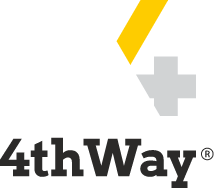 See why 4thWay now accepts ethical ads.
See why 4thWay now accepts ethical ads.
Lendwise Review
Impressive results and much needed diversity lending to fund postgraduate studies, in a P2P lending market overcrowded with property development lending.

Lendwise's lending accounts are unrated.
These loans are expected to pay lenders around 8.09% after bad debts.
Visit Lendwise or keep reading the Lendwise Review.
What does Lendwise do?
Lendwise is the only UK-based P2P lending company that lends to fund people’s education. You fund large sums (relative to other personal loans) to cover tuition fees, focusing exclusively on postgraduate and professional qualifications.
Borrowers studying full time accrue interest on their loans during their one- or two-year courses. Afterwards, they start repaying their loans and interest to lenders on a monthly basis. Borrowers on part-time courses have no grace period and start repaying immediately.
The average loan size is about £20,000.
When did Lendwise start?
Lendwise started at the end of 2018 and lending through its online lending platform has now reached £77 million.
What interesting or unique points does it have?
Lendwise fills a gap left by other quality P2P lending companies focused on personal loans, because they have all shifted their businesses away from the P2P model.
More than that, Lendwise’s borrowers are, on the whole, likely to be uniquely ambitious, driven, and understanding of their responsibilities.
These loans have an unusual repayment profile. Typically, the borrower accrues interest without paying anything for one year, but then they are offered two to 10 years to steadily repay the loan. With few loans repaid early, you earn interest for a long time on each loan.
The relatively few loans that suffer problems also have an unusual profile for personal loans – in a good way. It typically takes one to two years after repayments start for loans to fall late or turn bad, so that you earn more interest before any begin to have issues.
Lendwise review: how good are its loans?
The proportion of borrowers Lendwise accepts is high compared to other personal loans – but I think in this case understandably so.
The applicants for these very specific loans are much more likely to be those who’ll be accepted. This is not least because they have to demonstrate that they have earned a place on a course already and because the bulk of the loan payment is to be paid by Lendwise directly to the university in fees. The university repays the fees if the borrower drops out.
Yet it is of course the borrower, and not the university, that’s contracted to pay off the loan and interest. Clearly, these borrowers intend to go through with their studies and earn a higher income at the other end.
Borrowers are highly motivated, having already graduated and now pushing for courses at universities where Lendwise is able to model their likely future incomes. Some limited evidence suggests that borrowers generally go on to earn at or above the projected incomes.
Most universities are in the UK. For Lendwise to consider an overseas university, it has to be of particularly high regard. This means mostly top business schools and high-ranking universities.
Lendwise’s loans have performed well so far and the proportion of loans that have suffered bad debts is on the lower side for personal lending.
Recovery of debts that turn bad has also so far looked to be better than you usually expect from personal lending, which further improves overall returns.
About 15% of borrowers so far have been to non-UK nationals. These loans have a comparably excellent record versus loans to UK borrowers.
How much experience do Lendwise’s key people have?
After 11 years of assessing P2P lending companies and seeing their following results, it’s not easy to reassure us when prior experience is limited, but it does happen from time-to-time.
The named team has demonstrated little direct prior experience in terms of assessing loans, credit-risk policy and analysis, or recovery of bad debts. Backgrounds are also not in consumer lending, for the most part.
Unusually for that situation, the key team does still impress with their knowledge, rationality, clear demarcation of responsibilities, and their realism and down-to-earthness. The focus on data in particular reassured, as did the CEO’s sharp mind, picking up on every subtlety in our discussions.
In addition, they now have eight years’ experience at Lendwise with around 3,000 loans as we approach summer 2025. That’s one of the upsides of approving lots of smaller loans: you can reasonably quickly acquire knowledge from data, and we see evidence of a good learning curve in action.
The key people have other financial, banking, investment banking or accounting experience, and have worked in roles that saw exposure to money lending. This has some value, but it shouldn’t be overweighted.
They’re supported by some junior people, for which we have few details as we don’t usually interview lower down, but at least one of which is said to have at least some consumer lending experience.
In summary, we’d like to see a lot more relevant prior experience, but they impressed as well as they could do without it, and they have used the past eight years well to gain experience.
Lendwise review: lending processes
Lendwise are looking for responsible students, because, if the applicants have arrears and bad debts, they believe the “solution is not access to more debt.”
As with standard personal loans, Lendwise’s loan-application assessments begin with credit data and affordability, using mainly one credit-reference agency. This is normal, although we do prefer to see at least two, including one from Experian or Equifax, which we considered to have the best data when we did a data review a few years ago.
Their assessments are set apart from other lenders by looking at where the borrower has previously studied and what they studied, relevant work experience, and the baseline salaries already achieved and sustained. Looking to the future, they consider ranking tables of universities where the borrower is about to study again and typical time to get a job after studying there.
Lendwise models future earnings potential, based on historical outcomes for specific school and courses, as well as on broader earnings data for postgraduate degrees and from Lendwise’s own lending data.
The three on the credit committee, who make the final decision on approvals, usually have to agree, or it’s a No. This is good, although we do prefer to see that the committee always has to be unanimous.
Their processes for going after bad debts is well-structured, and they have sufficient staff to work on them. They are reassuringly quick to recognise arrears and other problems as bad debts.
Based on trajectories so far, I ultimately expect a highly creditable 50%-60% recovery of bad debt, at least during normal times, as we currently do not conduct our core stress tests on Lendwise to model performance during the worst kinds of shocks.
How good are Lendwise’s interest rates, bad debts and margin of safety?
By spring 2025, Lendwise lenders earned over four times more interest than there are bad debts.
Results between lenders will vary, even when spreading across a large number of loans, possibly by several percentage points. But there’s been a lot of interest cover so far to cope with bad debts.
We don’t have full data on lender diversification, but Lendwise is probably approving enough loans for most or all lenders to sufficiently spread their risks, which is very important with these kinds of loans.
We no longer conduct our core assessment on Lendwise, which means it’s no longer stress tested to see how lenders might do in disaster years and it is not assessed for a 4thWay PLUS Rating.
Nevertheless, I have reviewed some of its highly detailed data and I’m pleased to see that the proportion of loans that have suffered any notable issues is limited to just 4%, which is good for personal loans.
Just 16% of the over £2 million that has turned bad has been recovered so far. However, around half of the defaulted amount has been repaid to lenders already on loans that default 2+ years ago. Compared to normal personal loans issued by banks, this is a good result.
The profile of the loans has also been stable over the years, suggesting it maintains standards today.
Has Lendwise provided enough information to assess the risks?
Lendwise has committed to providing us with highly detailed data on the performance of all of its loans on a monthly basis. It has also given us a huge amount of information as well as access to its key people.
It has been candid with us in ways many aren’t, and this honesty and openness shows good character.
Information provided directly to its website users and lenders is also very good, when comparing it to its competitors. This includes its statistics page and its updates to lenders when they have any loans that have turned bad.
It could do with adding a little more information for its website users on the relevant skills and prior experience that it does and doesn’t have.
Is Lendwise profitable?
Details are limited and so I can only make best guesses based on that. Lendwise most likely isn’t profitable yet, but its trajectory has been good and it probably has the cash to keep going, giving it time to grow into the black.
What can you tell me about Lendwise’s cybersecurity?
Sucuri’s soft security probe for us of Lendwise’s cybersecurity shows its website and lending portal is secure and has no obvious concerns in terms of malware, out-of-date technology, its firewall or its coding. It’s also marked as clean by Google Sage Browsing, McAfee and other internet and security technology providers.
Is Lendwise a good investment?
With the caveat that we no longer stress test Lendwise for performance during major economic crises, I think that Lendwise is a good investment, especially for those who understand that they need to spread their risks across different kinds of prime borrowers, not just property borrowers. Don’t underestimate Lendwise.
What is Lendwise’s minimum lending amount and how many loans can I lend in?
The minimum you can put into a Lendwise account is £1,000, with a minimum of £10 per loan.
Some data and figures supplied to us by Lendwise indicates that lenders are currently probably finding it easy to spread their money over a large number of loans over the course of a year. You can set maximum loan amounts per borrower when auto-lending to cap your risks in any individual loan. For these loans – as loose guidance – you generally want to be lending in approximately 100 loans if possible – and several score loans at least. The higher the number the better.
Auto-lend options also include, among other things: the length of the loan, type of loan, field of study, interest rate, and whether the loan is new or being re-sold by another lender.
Does Lendwise have an IFISA?
Yes, Lendwise’s account is available as an IFISA.
Can I sell Lendwise loans to exit early?
Yes, you can sell your loans at their outstanding value for a 1% fee, provided other lenders buy your loan parts off you. You can’t sell loans that have turned bad or that are currently in arrears.
In a well-diversified portfolio, expect very roughly around half your money back by year four or five, and most of the rest within two to three more years.
Some broad statistics indicate that early repayments are rare when compared to other personal loans, so you need to be prepared to take some time to exit.
You might be able to speed your exit in advance by trying to get in on more loans due in shorter periods, perhaps by using the auto-lend settings.
Thanks for reading the Lendwise Review! Visit Lendwise.
Lendwise Classic Account: key details
4thWay PLUS Rating

3 PLUSes is best. What does the 4thWay PLUS Rating tell you about the risks and rewards?
Interest rate after bad debt
Here we show the P2P lending site's own estimate (or 4thWay's if theirs are not appropriate)
4thWay Risk Score
Lower Risk Scores are better. How is this different to the 4thWay PLUS Rating?
Description
£79 m in loans to fund postgraduate studies since 2018, with auto-lend, auto-diversification & early exit. Available in an IFISA
Minimum lending amount
Exit fees - if you sell loans before borrowers fully repay
Early exit is not guaranteed. Usually, other lenders need to buy your loans
Do you get all your money back if you exit early?
Loan size compared to security value
Reserve fund size as % of outstanding loans
Company/directors lend alongside you/first loss
Independent opinion: 4thWay will help you to identify your options and narrow down your choices. We suggest what you could do, but we won't tell you what to do or where to lend; the decision is yours. We are responsible for the accuracy and quality of the information we provide, but not for any decision you make based on it. The material is for general information and education purposes only.
We are not financial, legal or tax advisors, which means that we don't offer advice or recommendations based on your circumstances and goals.
The opinions expressed are those of the author(s) and not held by 4thWay. 4thWay is not regulated by ESMA or the FCA. All the specialists and researchers who conduct research and write articles for 4thWay are subject to 4thWay's Editorial Code of Practice. For more, please see 4thWay's terms and conditions.
The 4thWay® PLUS Ratings are calculations developed by professional risk modellers (someone who models risks for the banks), experienced investors and a debt specialist from one of the major consultancy firms. They measure the interest you earn against the risk of suffering losses from borrowers being unable to repay their loans in scenarios up to a serious recession and a major property crash. The ratings assume you spread your money across hundreds or thousands of loans, and continue lending until all your loans are repaid. They assume you lend across 6-12 rated P2P lending accounts or IFISAs, and measure your overall performance across all of them, not against individual performances.
The 4thWay PLUS Ratings are calculated using objective criteria that can be measured and improved on over time, although no rating system is perfect. Read more about the 4thWay® PLUS Ratings.
Our service is free to you. We don't receive commission or fees from the above-mentioned companies. We receive compensation from some other P2P lending companies when you click through from our website and open accounts with them, or to cover the costs of conducting our calculated stress tests and ratings assessments. This doesn't affect our editorial independence. Read How we earn money fairly with your help.



